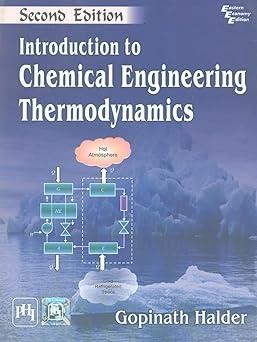In a chemical laboratory, it is decided to carry out the reaction [ mathrm{C}_{2} mathrm{H}_{5} mathrm{OH}(mathrm{g})+frac{1}{2} mathrm{O}_{2}(mathrm{~g})
Question:
In a chemical laboratory, it is decided to carry out the reaction
\[ \mathrm{C}_{2} \mathrm{H}_{5} \mathrm{OH}(\mathrm{g})+\frac{1}{2} \mathrm{O}_{2}(\mathrm{~g}) \rightarrow \mathrm{CH}_{3} \mathrm{CHO}(\mathrm{g})+\mathrm{H}_{2} \mathrm{O}(\mathrm{g}) \]
at 1 bar and \(298 \mathrm{~K}\). Calculate the standard Gibbs free energy change at \(298 \mathrm{~K}\) and predict whether it is feasible to carry out the given reaction or not. If possible, then calculate the equilibrium constant. We are given that
\[ \Delta G_{f, \mathrm{CH}_{3} \mathrm{CHO}}^{0}=-133.978 \mathrm{~kJ} \quad \Delta G_{f, \mathrm{H}_{2} \mathrm{O}}^{0}=-228.60 \mathrm{~kJ} \quad \Delta G_{f, \mathrm{C}_{2} \mathrm{H}_{5} \mathrm{OH}}^{0}=-174.883 \mathrm{~kJ} \]
Step by Step Answer:






